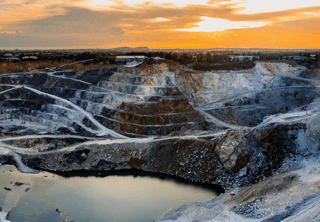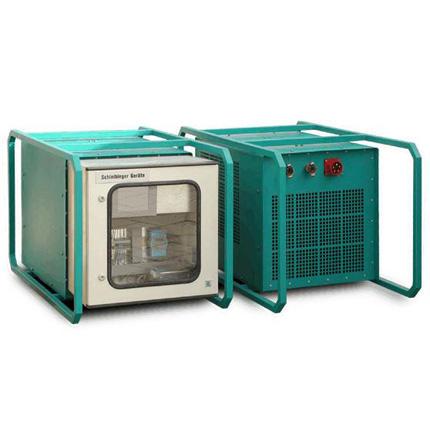|
Application
|
The temperature of concrete specimen is controlled by a circulating water bath. The target temperature is measured by a wireless device with 4 thermocouple channels. A curing number is calculated. All temperatures are recorded on a compact flash card. Temperature profiles may be re-played later on. The instrument may be totally controlled by the Internet. A WEB, FtP and Telnet server is built in.
|
|
Size (hxwxd)
|
650x500x1000 mm
|
|
Vessel volume
|
up to 1000l
|
|
Pump
|
19 m³ / h max 95°C, 0,8kW, max. conveyor height 7m @ 4m³/h
|
|
Max. Temperature
|
90°C
|
|
Min. Ttemperature
|
5°C
|
|
Heating Power
|
2* 2,2kW = 4,4 kW
|
|
Cooling power*
|
> 1000W
|
|
Temperature recoring building site
|
4 x Thermocouples Typ K. Temperature and ambient temperature as well as battery status are sent up to 1000m (free area) to the curing simulator
|
|
Size Temperature Transmitter
|
diameter 70mm, height 35mm, for field application
|
|
Battery lifetime of the transmitter
|
2 Litium batteries, at least 3..6 months
|
|
Temperature measurement inside the curing simulator
|
RTD PT100 1/10 DIN B in the circulation, add. ambient temperature RTD sensor
|
|
Data recording
|
all temperatures, date, time, curing ratio on a CF card as text file.
|
|
Controller
|
Embedded in the curing simulator, user interface colored touch screen, or remote Web-browser, grahical screen for the temperature
|
|
Interfaces
|
1 x 100MBit TCP/IP RJ45, CF card interface
|
|
Services
|
WEB/http, Telnet, FTP, no special PC software necessary
|
|
Modem*
|
GSM/GPRS or UMTS, SMS and e-mails as alarm messages, WEB Administration, SIM card must supplied by the user
|
|
Power Supply
|
3×16 A, 7kW, CEE Connector
|
|
UPS
|
a 12 V / 40Ah (car battery) may be connected. If the maisn power is interrupted, an alarm is sent by SMS and e-mail. The electronic will record the data up to 36 hours. The battery will be reloaded during normal operation
|
|
Filter
|
cleaning the circulated water, easy to clean
|
|
Safety
|
4 automatic fuses, 1 RCD breaker, 3 redundant over-temperature protectors. low- and high pressure switches in the cooling unit. Electronic current protection for the pump.
Corrosion protection by an integrated sacrificial anode.
|

 Hoskin Environnement
Hoskin Environnement
 Hoskin Géotechnique
Hoskin Géotechnique
 Hoskin Instrumentation
Hoskin Instrumentation


 Posez une question sur ce produit
Posez une question sur ce produit



